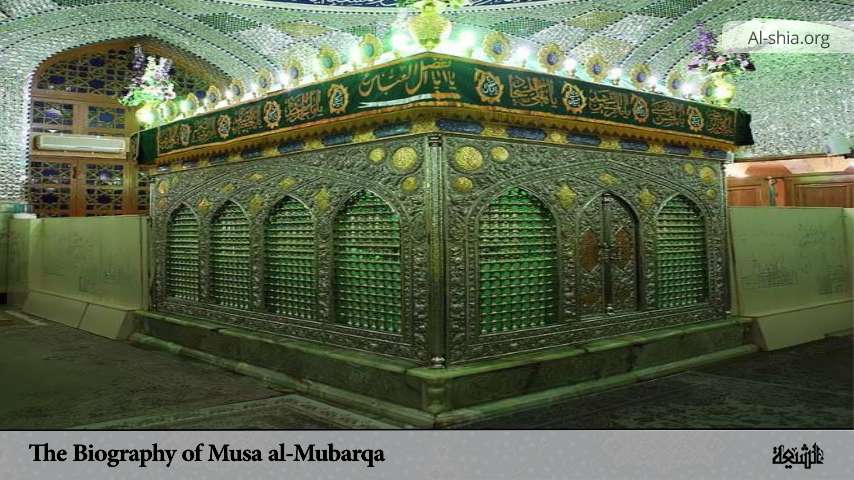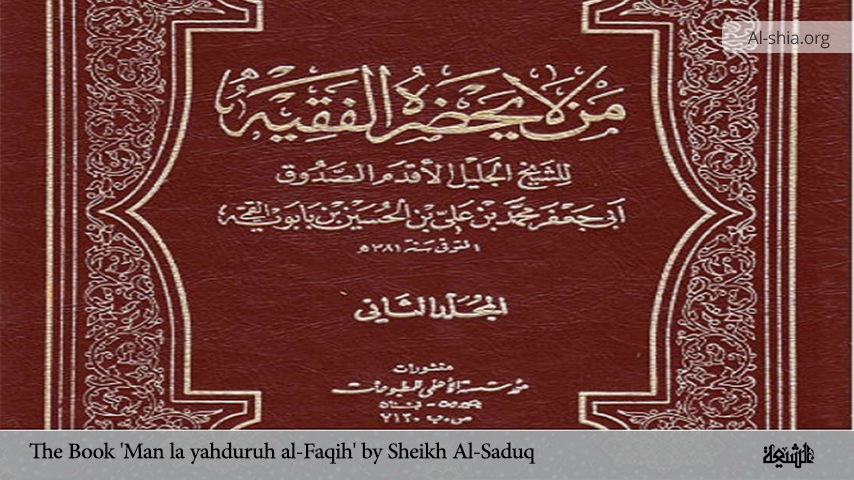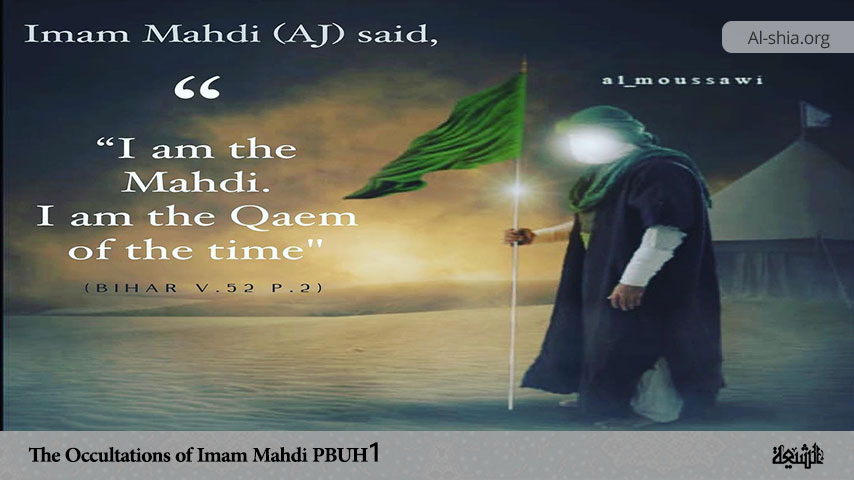Musa ibn Muḥammad al-Mubarqaʿ was a direct descendant of the Prophet Muḥammad through his daughter Lady Fatimah al-Zahra and her husband Ali ibn Abi Talib. He was specifically a great-grandson of Imam Alī ibn Musa al-Riḍa, the eighth Shia Imam. Musa al-Mubarqa is the ancestor of Radawi Sayyids who are spread in countries such as Iran, India, Pakistan, Afghanistan, Iraq, and Syria[1]. Meanwhile, this paper aims to explore the life and significance of Musa ibn Muḥammad al-Mubarqaʿ covering his family background, early life, challenges, and legacy. In order to understand this, it is crucial to establish his genealogical background and the historical context in which he lived.
His Lineage and Family Background
Hazrat Musa is the son of Imam Muḥammad ibn Ali al-Taqi, also known as Imam al-Jawad[2] (the ninth Shia Imam) and her mother was Samana al-Maghribiyya, (nicknamed Umm Walad Umm ul-Fadl[3]) who was also the mother of Imam al-Hadi (PBUH)[4]. Imam al-Jawad (PBUH) has said about her: “There is a servant who is aware of my right (the right of Imamate), meaning she understood the status and rank of Imamate. She is an inhabitant of heaven. The rebellious Satan cannot approach or influence her. His tricks, deception, and rebellion do not reach Samana. She is under the supervision of God, and she is never heedless. She is no different from the honest and pure mothers[5].”
His grandfather, Imam Ali al-Riḍa was a key figure during the Abbasid Caliphate. He was one of the brothers of Imam Ali al-Hādi (PBUH), the tenth Shia Imam, further emphasizing his closeness to the Imamate line. His relationship with the Imams would have made him a figure of interest both to the Shia followers. This direct lineage from the Imams placed Musa in a critical position within the Shia community.
His Title
The title “al-Mubarqaʿ”, meaning “the Veiled,” is unique and significant in understanding Musa ibn Muḥammad, as and he was called so because he used to cover his face with a veil[6] in order to hide his identity against Abbasid persecution.
His Birth and Early Life
Musa ibn Muḥammad al-Mubarqaʿ was born in Medina in 214/829-30[7], the birthplace of many of the Imams and a major center for religious learning and the Shia community. Being raised in this environment, Musa would have received instruction from members of the Shia elite, including his father and older brother, Imam Ali al-Hādi.
Musa ibn Muḥammad al-Mubarqaʿ lived during a time when the Abbasid caliphs were wary and grew increasingly hostile toward the influence of the members of the Prophet’s Household due to their popular support among the masses and potential to challenge Abbasid authority.
The mid-9th century CE (3rd century AH) saw a period of intense scrutiny and surveillance of the Alids, especially following several uprisings by various descendants of Ali. During this period, the Shia community was under constant surveillance, and any figure with ties to the Imams was closely watched. This historical setting would have significantly influenced Musa’s life and movements.
Movements, Travels, and Key Events
One of the most significant events in Musa’s life was his migration to Qom after the martyrdom of his father[8]. Many descendants of the Prophet found refuge in this city as they fled persecution from the Abbasids. It is believed that Musa relocated to Qom for two purposes:
–Seeking Refuge: Qom had become a stronghold for Shia scholars and descendants of the Prophet who sought refuge from Abbasid persecution. It provided a safer environment for the Alids who wanted to avoid the constant harassment they faced in other parts of the empire.
–A Religious Hub: During Musa’s time, Qom was growing as a center of Shia learning. By relocating to Qom, Musa placed himself in a supportive community where he could continue his religious activities in relative safety. His descendants became influential figures in Qom, further cementing the city’s status as a major Shia center.
In Qom, Musa ibn Muḥammad al-Mubarqaʿ is said to have lived a more secluded and pious life, continuing his religious devotion and likely teaching the followers of the Ahl al-Bayt. His descendants continued to live in Qom and became influential in the local religious circles.
Challenges and Persecutions
As a descendant of the Infallible Imams, Musa and his family faced ongoing surveillance and persecution by the Abbasid authorities, who viewed the Alids as potential rivals. The Abbasids, particularly after the failed Alid revolts, were suspicious of any figure with ties to the Prophet’s family, fearing that they could stir uprisings among Shia loyalists. Although Musa himself did not engage in any recorded revolts, the very fact of his lineage made him a potential threat in the eyes of the Abbasid rulers.
Some sources suggest that Musa’s decision to wear a veil and adopt a low profile in Qom might have been driven by the constant threat of Abbasid reprisal. His quiet life in Qom could have been a form of self-imposed exile to avoid conflict with the central government, as many of his relatives had been imprisoned or killed by the caliphs.
His Legacy
While Musa ibn Muḥammad al-Mubarqaʿ did not lead any notable revolts or play a significant role in political resistance, his life reflects the broader challenges faced by the members of the Prophet’s Household under Abbasid rule. The need to remain veiled and move to a religious center like Qom demonstrates the difficult balance they had to strike between survival and maintaining their religious and moral authority within the Shia community. Musa Mubarqa is the ancestor of Radawi Sayyids who are spread in countries such as Iran, India, Pakistan, Afghanistan, Iraq, and Syria. His descendants continued to live in Qom and other nearby countries, thereby contributing to the religious scholarship and leadership of the city. Their prominence helped ensure the survival and growth of the Shia tradition in the region, which had been under threat from Abbasid oppression.
His Death
After forty years of living in the holy city of Qom, Musa Mubarqa finally Musa passed away in Rabi’ Thani 22, 296 (correspondent to January 18, 909 CE) in Qom[9]. After the magnificent burial of his body, the ruler of Qom at the time, Abbas ibn Amr Ghanwi, prayed over his body and was buried in a house known as the house of Muhammad ibn Al-Hasan ibn Abi Khalid Al-Ash’ari. His burial place is now in Qom and it is the place of worship of believers. The construction of his current shrine was sponsored by the Safavid king Tahmasp I (r. 1524–1576).
Conclusion
The life of Musa ibn Muḥammad al-Mubarqaʿ offers a compelling lens through which we can explore the broader challenges faced by the members of the Prophet’s Household during the Abbasid Caliphate. As a descendant of the Prophet Muḥammad and part of the family of Imams, Musa inherited not only a profound spiritual legacy but also the burdens of political suspicion and persecution. The Abbasid rulers, while initially coming to power with Shia support, quickly turned against the descendants of Ali, perceiving them as threats to their rule.
Musa’s experiences reflect the complex relationship between the members of the Prophet’s Household and the Abbasid regime. His migration to Qom, a city that became a refuge for Shia scholars and the members of the Prophet’s Household, highlights his decision to seek safety in a supportive environment. In Qom, Musa continued to live a devout and scholarly life, contributing to the city’s growing reputation as a center of Shia learning. His descendants became key figures in the religious circles of Qom, further solidifying the city’s role in the preservation of Shia traditions.
Ultimately, Musa’s life, though less documented than some of his relatives, represents the resilience of members of the Prophet’s Household in the face of ongoing persecution. His legacy lives on through his descendants and the continued influence of Qom as a major hub for Shia scholarship. The challenges he faced, from Abbasid repression to the need for self-concealment, reflect the broader historical struggle of the Ahl al-Bayt to maintain their religious and moral authority amidst a hostile political landscape. Through his quiet perseverance, Musa played a vital role in ensuring the survival and growth of the Shia community during a tumultuous period in Islamic history.
References
[1] . Mirza Muhammad Baqir ibn Isma’il al-Radawi, Shajara tayyiba dar ansab-i silsila Sadat ‘Alawiyya Radawiyya
[2] . Shaykh Mufid, Kitab al-Irshad, p. 464.
[3] . Al-Kafi, vol. 1, p. 497; Bihar al-Anwar, vol. 5, p. 114 and 115; Kitab al-Irshad, p. 327; Majma’ al-Rijal, vol. 7, p. 188 and 176; A’yan al-Shi’ah, vol. 2, p. 36.
[4] . Ṣadūq, Muḥammad ibn ʿAlī, Al-Khiṣāl, vol. 2, p. 326; Qummī, Shaykh ʿAbbās, Muntahā l-āmāl fī tawārīkh al-Nabī wa al-Āl., vol. 2, p. 569.
[5] . Dhabih Allah Mahallati, Rayahin al-Shari’ah, vol. 3, p. 23.
[6] . Ibn Shuʿba al-Ḥarrānī, Ḥasan ibn ʿAlī, Tuḥaf al-ʿuqūl ʿan Āl al-Rasūl, p. 476; ʿAṭārudī, ʿAzīz Allāh, Musnad al-Imām al-Jawād, p. 84-85.
[7] . Baḥrānī, ʿAbd Allāh Iṣfahānī, ʿAwālim al-ʿulūm wa al-maʿārif, vol. 23, p. 553.
[8]. Qummī, Ḥasan ibn Muḥammad ibn Ḥasan, Tārīkh-i Qom, p. 215; ʿAṭārudī, ʿAzīz Allāh, Musnad al-Imām al-Jawād, p. 84-85.
[9] . Ibn Shuʿba al-Ḥarrānī, Ḥasan ibn ʿAlī, Tuḥaf al-ʿuqūl ʿan Āl al-Rasūl, p. 476; ʿAṭārudī, ʿAzīz Allāh, Musnad al-Imām al-Jawād, p. 84-85.

















